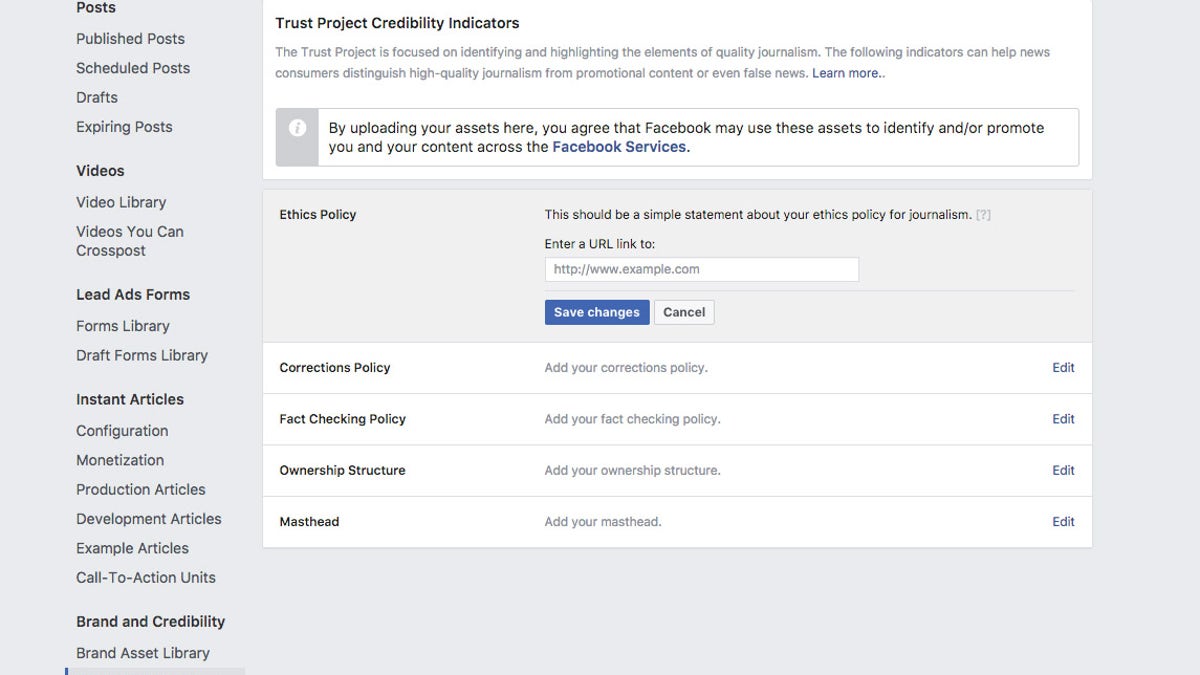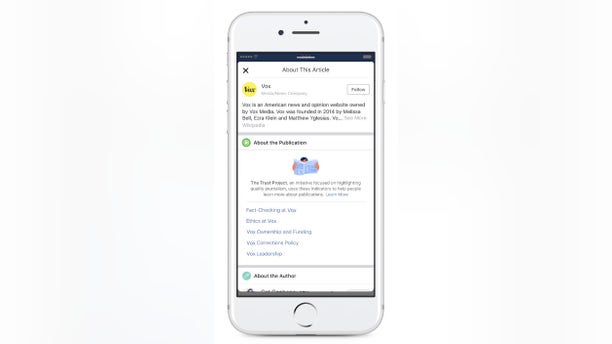
Facebook is one of several tech firms scrambling to root out fake news in the wake of Russia's 2016 disinformation campaign. (Facebook)
It’s hard to know what to trust in the era of fake news.
A group of media publishers and tech giants hope that it’s about to become a bit easier through the introduction of “Trust Indicators” on their content that will enable readers to determine the reliability of their content.
These new indicators, being launched by Facebook and Google but created in consultation with 75 news organizations worldwide, will appear as “i” symbols alongside articles posted online and will indicate how a story was reported, the media company’s standards and the writer’s credentials.
This comes as 45 percent of Americans polled have “hardly any” confidence in the media, U.S. lawmakers bemoan the influence of Russia’s disinformation efforts in 2016, tech companies reel from Moscow’s meddling and Americans increasingly find it hard to distinguish facts from fiction.
FACEBOOK: RUSSIAN-BACKED CONTENT REACHED 20 MILLION AMERICANS ON INSTAGRAM
“As a news consumer, I want news I can trust. I want to be able to read a piece of fake news and know who’s behind it, where the information comes from, and the reporting values of the news organization,” Craigslist founder Craig Newmark, whose philanthropic fund is helping to back this effort, known as The Trust Project, said in a statement posted online.
The Trust Project is spearheaded by Sally Lehrman of Santa Clara University’s Markkula Center for Applied Ethics and hosted by the center.
“An increasingly skeptical public wants to know the expertise, enterprise and ethics behind a news story,” said Lehrman. “The Trust Indicators put tools into people’s hands, giving them the means to assess whether news comes from a credible source then can depend on.”
Facebook will initially test the Trust Indicators by adding them to its information “button,” and will likely expand the participating outlets in the coming months, according to a post on the tech giant’s blog.
DIGITAL DISASTER: FACEBOOK, GOOGLE CARRY FAKE NEWS ON LAS VEGAS SHOOTING
“We believe that helping people access this important contextual information can help them evaluate if articles are from a publisher they trust, and if the story itself is credible,” said Andrew Anker, Facebook product manager, on the company’s blog. “This step is part of our larger efforts to combat false news and misinformation on Facebook — providing people with more context to help them make more informed decisions, advance news literacy and education, and working to reinforce indicators of publisher integrity on our platform.
Google will use the indicators “next to articles that may appear on Google News, Google Search, and other Google products where news can be found,” Jeff Chang, Google’s group product manager for search, said in a post on the company’s blog.
News sites may use the indicators on article pages or other areas of the site, such as corrections or editorial pages. The Economist, The Globe and Mail, The Washington Post and Mic are some of the outlets that will go live with Trust Indicators.
“We believe the indicators can help our algorithms better understand authoritative journalism—and help us to better surface it to consumers,” Richard Gingras, vice president of news products at Google, said in a statement.

